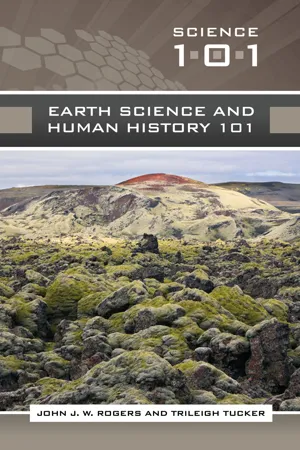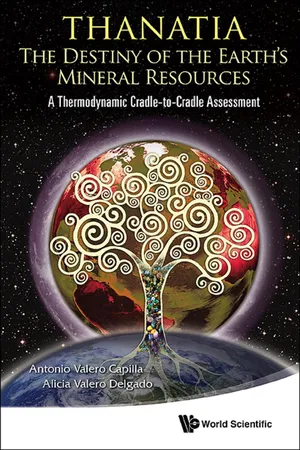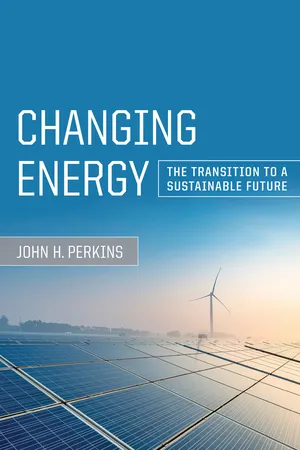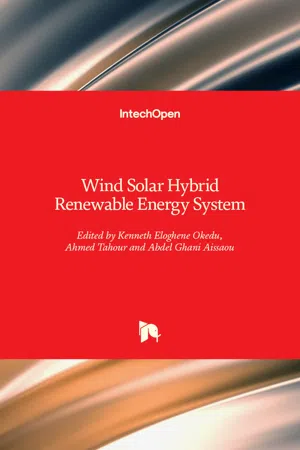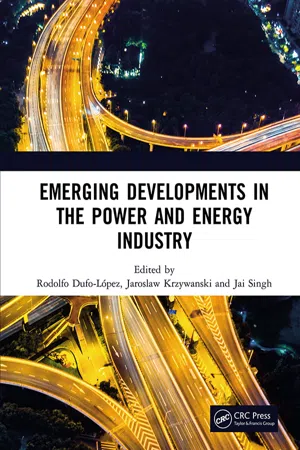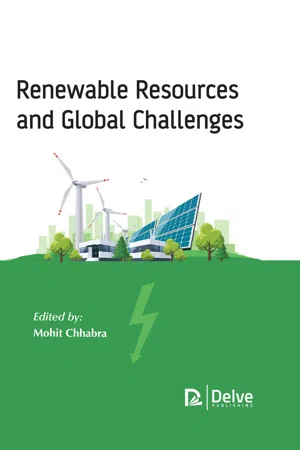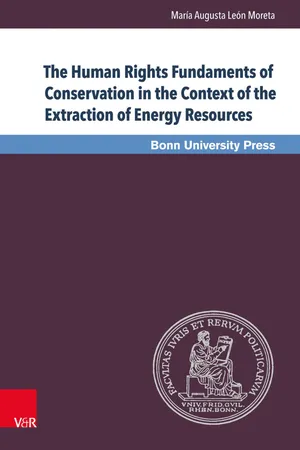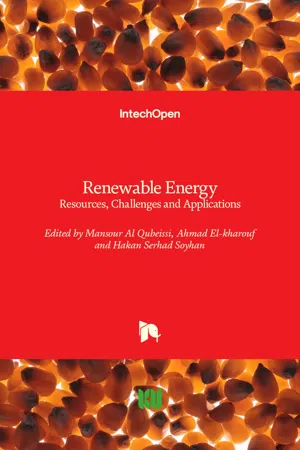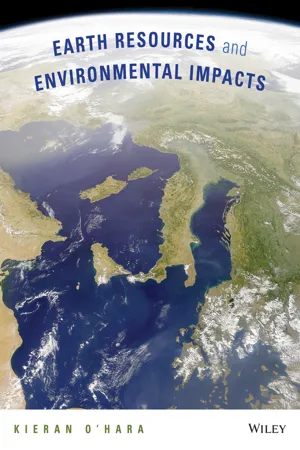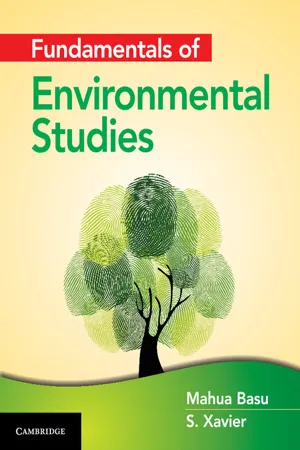Geography
New Energy Resources
New energy resources refer to alternative sources of energy that are being developed and utilized to reduce reliance on traditional fossil fuels. These resources include solar, wind, hydroelectric, geothermal, and biomass energy. They are considered more sustainable and environmentally friendly, and are increasingly being integrated into energy production to address concerns about climate change and energy security.
Written by Perlego with AI-assistance
Related key terms
1 of 5
11 Key excerpts on "New Energy Resources"
- eBook - PDF
- John J.W. Rogers, Trileigh (Patricia) L. Tucker(Authors)
- 2008(Publication Date)
- Greenwood(Publisher)
4 Resources and the Environment Geology and atmospheric dynamics control the distribution of natu- ral resources around the world. Reallocating these resources so that they are shared with those in countries other than where they originate has profoundly shaped world history, including power relationships, na- tional boundaries, and the well-being of billions of people throughout geography and time. We discuss five critical aspects of present and past consumption of resources and the environmental consequences of their use: (1) en- ergy resources; (2) mineral and rock resources; (3) food resources; (4) fresh water resources; and (5) wireless communication and the Internet, which has recently become one of the world’s most powerful resources. Energy resources have been critical to cultural evolution throughout history because use of stored energy multiplies the productivity of hu- man and animal energy. The activities involved in discovery, extraction, refining, purchase, delivery, and use of these energy resources constitute a significant proportion of world economic activity. All energy sources, however, create significant problems. The United States must import most of its oil, and world reserves are being depleted. Burning fossil fuels has serious consequences for global atmospheric processes (see Chapter 1). Nuclear fuels have several downsides, partly because ra- dioactive elements can be used for making the most powerful weapons ever invented, and radioactive isotopes are very hard to get rid of safely once they have been created for any purpose. Fully renewable energy resources include hydropower, solar and wind energy, and biofuels, but production of some biofuels reduces the amount of food available for people. Mineral and rock resources have been critical for making tools and other physical goods throughout history and also for serving as symbols - eBook - ePub
Thanatia: The Destiny Of The Earth's Mineral Resources - A Thermodynamic Cradle-to-cradle Assessment
A Thermodynamic Cradle-to-Cradle Assessment
- Antonio Valero Capilla, Alicia Valero Delgado(Authors)
- 2014(Publication Date)
- WSPC(Publisher)
Chapter 6 The Resources of the Earth 6.1 IntroductionIn this chapter, a deeper look at the Earth’s components deemed useful to Man is undertaken. Consequently, a revision of energy and non-energy resources is carried out. This information will serve in a later chapter for assessing the exergy of the main resources on Earth. Energy resources have been divided into energy originating from the solid Earth i.e. nuclear and geothermal; tidal; and that derived from the sun, including solar, hydroelectricity, wind, biomass and hydrocarbons. After a general description of each, it shows all of the potentially available resources that Nature provides, those which could be effectively obtained using technology into the near future and those which are used today. In addition, mineral resources are studied, highlighting their abundance and average crustal concentration.6.2 Natural resources: definition, classification and early assessmentsA natural resource can be defined as any form of matter or energy obtained from the environment that meets a human need. Therefore water, air, oil, biomass or minerals are classified as such. Natural resources are frequently categorised as renewable or non-renewable. The former are defined as those that are regenerated within a human time scale. Examples include hydro, biomass or solar energy. On the contrary, the latter can be considered a stock that has a regeneration rate of zero over a relatively long period as is the case of minerals (Lujula, 2003).Minerals can be further classified as fuel and non-fuel resources. Fuel resources are those from which energy can be potentially extracted i.e. coal, oil, natural gas or uranium. Non-fuel minerals include metals and industrial minerals.An early assessment of the renewable and non-renewable energy resources on Earth was undertaken by Hall et al. (1987) and can be seen in Table 6.1 - eBook - PDF
- John H. Perkins(Author)
- 2017(Publication Date)
- University of California Press(Publisher)
Hydropower resources are found where rivers run downhill, which is common but does not occur everywhere. Solar, wind, and hydropower can move only as electrical energy, but that is a relatively cheap mode of transport. The criterion Geographic Distribution assesses the breadth and even-ness of the deposits or supplies of a primary energy source. new criteria Each of the above criteria has long affected energy investments, and each will continue to affect decision making on investments in the Fourth Energy Transition. To these traditional criteria we must add new ones, which follow from the importance of sustainability and demo-cratic choices. Sustainability Sustainability has become a meaningless buzzword. 3 A proponent of a project can seek support for a project or idea by claiming sustainability. Similarly, critics of a project can usefully allege unsustainability, because favoring an unsustainable idea is silly. Adding specifics, however, makes the word useful. The concept of sustainability gained prominence in 1986 with the pub-lication of Our Common Future by the World Commission on Environ-ment and Development, organized by the United Nations and chaired by Gro Harlem Brundtland, former prime minister of Norway. The “Brundt-land Report” offered the essential definition of sustainable development as “development that meets the needs of the present without compromis-ing the ability of future generations to meet their own needs.” 4 For the Commission, sustainability involved an inextricably inter-twined set of concerns: economic growth, elimination of poverty, needed constraints on deployment of technology, reductions of inequal-ity, and the protection and nurturing of ecosystems and resources. The 210 | Chapter 9 aim was to enable future generations to have as good a life as the cur-rent one, which meant that sustainability rests on a time line of forever . - eBook - PDF
- Kenneth Eloghene Okedu, Ahmed Tahour, Abdel Ghani Aissaou, Kenneth Eloghene Okedu, Ahmed Tahour, Abdel Ghani Aissaou(Authors)
- 2020(Publication Date)
- IntechOpen(Publisher)
Along with the outstanding advan-tages of these resources, some shortcomings also exist such as the variation of output due to seasonal change, which is the common thing for wind and hydroelectric power plant; hence, special design and consideration are required, which are fulfilled by the hardware and software due to the improvement in computer technology. Keywords: conventional energy resources, social, environmental, economical, hydropower, photovoltaic, geothermal 1. Introduction Renewable energy is going to be an important source for power generation in the near future, because we can use these resources again and again to produce useful energy. The energy resources are normally classified as fossil resources, renew-able, and nuclear energy resources. Different renewable energy resources, like hydropower, wind, solar, biomass, ocean energy, biofuel, geothermal, etc., provide 15–20% of the total world’s energy. The world is going to turn into a global village due to more requirement of energy due to fast growing population, which leads to Wind Solar Hybrid Renewable Energy System 228 the use the fossil fuels like coal, gas, and oil to fulfill the energy requirement, which creates unsustainable situations and many problems like depletion of fossil fuels, environmental and geographical conflicts, greenhouse effect, global warming, and fluctuation in fuel prices. Due to environment-friendly and less emission of gases from renewable energy, it is considered as sustainable energy; also supported for the society from each dimensions like economic, social and environmental. “Approximately 1.6 billion people have no access to electricity and about 1.1 bil-lion are without water supply” [1]. Renewable energy resources have an ability to complete the world’s energy demand, protect the environment, and provide energy security. - eBook - PDF
Emerging Developments in the Power and Energy Industry
Proceedings of the 11th Asia-Pacific Power and Energy Engineering Conference (APPEEC 2019), April 19-21, 2019, Xiamen, China
- Rodolfo Dufo-López, Jaroslaw Krzywanski, Jai Singh(Authors)
- 2019(Publication Date)
- CRC Press(Publisher)
3.1 Sustainable development Sustainable energy is the energy that, in its production or consumption, has minimal negative impacts on human health and the healthy functioning of vital ecological systems, including the global environment. It is an accepted fact that renewable energy is a sustainable form of energy, which has attracted more attention during recent years. Increasing environmental interest, as well as economic consideration of fossil fuel consumption and high emphasis of sustainable development for the future helped to bring the great potential of renewable energy into focus Wu, and Boggess (1999). Nearly a fifth of all global power is generated by renew-able energy sources, according to a new book published by the Organisation for Economic Co-operation and Development (OECD)/International Energy Association (IEA) OECD/IEA (2004). ‘‘ Renewables for power generation: status and prospects ’’ claims that, at approxi-mately 20%, renewables are the second largest power source after coal (39%) and ahead of nuclear (17%), natural gas (17%) and oil (8%) respectively. From 1973-2000 renewables grew at 9.3% a year and it is predicted that this will increase by 10.4% a year to 2010. Wind power grew fastest at 52% and will multiply seven times by 2010, overtaking biopower and hence help reducing green house gases, GHGs, emissions to the environment. 4 RESULTS AND DISCUSSIONS The availability of data on solar radiation is a critical problem. Even in developed countries, very few weather stations have been recording detailed solar radiation data for a period of time long enough to have statistical significance. Solar radiation arriving on earth is the most fundamental renewable energy source in nature. It powers the bio-system, the ocean and atmospheric current system and affects the global climate. - eBook - PDF
- Mohit Chhabra(Author)
- 2019(Publication Date)
- Delve Publishing(Publisher)
However, an important way to overcome these barriers is trying to explore for alternate sources of renewable energy such as solar energy, wind energy, geothermal energy, hydroelectricity, and several others which can meet the demands of increasing population and result in ensuring energy security across the world. There is a huge difference and fluctuation of oil in the past 10–15 years, which ranged from an extremely high price in 2012 to 2013 to an extremely low price record in 2015–2016. Oil and energy are the major drivers or barriers for any economy and environment as a result of which such huge fluctuation in the price of oil led to a number of protests and strikes because of these highs and lows in prices. There is a need to recognize that oil is an important commodity with a huge possibility for depletion, and when these prices are erratic and changing there is a need for exploration of different alternative sources of energy. 1.3.4. Economic Stability The major possible achievement of the renewable sources such as hydroelectricity, tidal power, solar panels, and others is the constant availability of these resources, and they are economically viable and sustainable. Renewable sources of energy are known to create economic sustainability as there would be no price fluctuations in maintenance and use of these resources. The energy that is derived from renewable sources is known to be extremely cheap when compared to non-renewable sources or Introduction to Renewable Resources 11 fossil fuels. This is the major reason for the economic sustainability that is achieved from the utilization of these resources. A number of countries and places use a major chunk of energy from several renewable sources of energy such as geothermal sources of energy. There are a number of places such as Texas where the energy produced from renewable energy sources such as wind energy is made available to citizens at an extremely cheap rate. - eBook - PDF
- María Augusta León Moreta(Author)
- 2015(Publication Date)
- V&R Unipress(Publisher)
2. Extraction of Energy Sources The first stage in an energy system is the extraction of energy resources. This activity can exert significant pressure on these sources and on the environment depending on energy demand, mainly driven by population growth, economic development and patterns of consumption. The exploitation of energy resources has been defined as methods of turning energy sources into productive and profitable uses. These methods, however, differ greatly depending on the various types of resources. 250 Natural resources used in the generation of energy range from raw materials (renewable and non-renewable resources and environmental media), flow resources (wind, sun, tidal waves, geothermic) to space. Since the focus of this work is on analysing the link between environment and human rights in the context of the extraction of energy resources and its consequences on the environment and population, it is important to understand the factors and methods bearing on the extraction process. Therefore, the analysis below will address the extraction processes of raw materials and the use of environ- mental media for the generation of non-renewable energy (fossil fuels) and renewable energy (hydroelectric power and biomass) as well as to the con- sequences of this activity on the environment and the population. a. Non-renewable Energy Resources : Basic Components for the Generation of Fossil Fuels According to the European Environmental Agency, fossil fuels are ‘one of the most important and strategic natural resources in modern society’ and con- stitute ‘the primary natural resource for satisfying the growing energy needs of industrialized countries.’ 251 Moreover, fossil fuels are now strategic instruments for ensuring economic growth in emerging countries since they support their industrialization process. In fact, the demand for fossil fuels has considerably increased in emerging countries because of the recent experimented in- dustrialization. - eBook - PDF
Renewable Energy
Resources, Challenges and Applications
- Mansour Al Qubeissi, Ahmad El-kharouf, Hakan Serhad Soyhan, Mansour Al Qubeissi, Ahmad El-kharouf, Hakan Serhad Soyhan(Authors)
- 2020(Publication Date)
- IntechOpen(Publisher)
Furthermore, renewable energy is more ame-nable to distributed production, which is inherently more secure than the fossil fuel paradigm. Renewable energy will help usher an era of energy democracy, where a network of decentralized prosumer systems will play the role once dominated by large-scale power generation. 5. Conclusions Geopolitical events in the twenty-first century have brought energy security and renewable energy in the forefront of political discourse and provided the motivation for this chapter. The energy security literature was reviewed, and a novel index of energy security was proposed. The index comprised the following dimensions: physical availability, technology development, economic affordability, social acces-sibility, governance, unconventional threats, and natural environment. A small panel of academic and business experts in Greece rated physical avail-ability as the most important and natural environment as the least important dimension of energy security. These experts thought that the importance of energy security has been increasing steadily since the beginning of the twentieth century. Key geopolitical actors (the United States, Russia, China, Germany, and Den-mark) have increased electricity production from renewable energy by a combina-tion of different renewable sources. Despite any social acceptability issues and negative environmental impacts, renewable energy will help countries become more energy secure. At the same time, they will make themselves more resistant to geopolitical strife and more independent of the vagaries of fossil fuel markets. As renewable energy sources are incorporated in the energy mix during the rest of the twenty-first century, the impact of geopolitical conflict on energy security will lessen. Furthermore, the energy generation industry will become more compatible with the original 4A energy security targets of accessibility and acceptability. 38 Renewable Energy -Resources, Challenges and Applications - eBook - PDF
- Kieran D. O'Hara(Author)
- 2014(Publication Date)
- Wiley(Publisher)
Resource Carbon-Based Noncarbon-Based Renewable Nonrenewable Petroleum X X Natural gas X X Coal X X Biofuels X X Nuclear X X Geothermal X X Solar X X Wind X X Hydroelectric X X Tidal/wave X X Two Classifications of Energy Resources 274 CHAPTER 9 Energy Perspectives Introduction This chapter is somewhat more quantitative than the others. The chapter begins with a brief overview of energy use over time. Different types of energy, including potential, kinetic, chemical, and geothermal, are introduced. The difference between energy and power (energy/time) is pointed out, and the units of energy (joule) and power (watt) are defined. The concept of energy efficiency refers to the conversion of heat to useful work and requires an introduction to heat engines and the first and second laws of thermodynamics. Energy density refers to the amount of energy produced per unit weight (joules per kilogram) of a resource, and power density refers to the amount of energy produced per unit time and area (watts per meter squared). These concepts are useful in evaluating the potential significance of renewable sources such as biofuels, wind, and solar energy as part of our overall energy mix in the future. Energy Use Over Time Prior to Roman times, the main sources of energy were humans, beasts of burden, and water power; wind power no doubt also powered the sails of early mariners. One of the most intense early energy sources was probably the smelting of metals by burning charcoal in a primitive furnace. The increase in energy use per person during the last millennium was relatively slow, however, until the onset of the Industrial Revolution in the eighteenth century when the intensity of energy use increased rapidly (Figure 9.1). By the 1900s Amer- icans were using about twice as much energy as Britons, and by the year 2000, Americans were using twice as much energy as either Europeans or the Japanese. - eBook - PDF
- Dhankhar, Rajesh(Authors)
- 2021(Publication Date)
- Daya Publishing House(Publisher)
I Natural Resources Introduction Forest Resources Water Resources Mineral Resources Food Resources Energy Resources Land Resources Role of an Individual in Conservation of Natural Resources INTRODUCTION n broad terms, a resource or natural resource, is an asset available to be used when needed by an organism or group of organisms. In other words, a resource is something useful for humanity, but the concept of utility can change because of technological, economical, and environmental factors. The sum total of all physical, chemical and social factors which compose the surrounding of man is referred to as environment and each element of these surroundings constitute resource on which man draws in order to develop a better life. Any material which can be transformed in a way that it becomes more valuable and useful can be termed as resource. It is possible to obtain valuable items from any resource. This ebook is exclusively for this university only. Cannot be resold/distributed. Ramade (1984) defined a resource as a form of energy or matter which is essential for the functioning of organisms, population and ecosystem. In the case of human beings, a resource, in his words, “is any form of energy or matter essential for fulfilment of physiological, socio-economic and cultural needs, both at the individual level and that of the community”. The functioning of ecosystem or of technological civilisation involves a continuous flow and consumption of energy. In light of this fact, a resource may be defined as one of the various forms of primary source of energy present in nature. The five basic ecological variables are energy, matter, space, time and diversity, sometimes together called natural resource. Classification of Natural Resources Resources may be classified on the basis of the following. 1. Availability (i) Inexhaustible: These resources are unlimited in quantity and quality. With the passage of time quality may be degraded but not the quantity. - eBook - PDF
- Mahua Basu, Xavier Savarimuthu, SJ(Authors)
- 2017(Publication Date)
- Cambridge University Press(Publisher)
27 Natural Resources – Energy B. Based on the degree to which they are developing/processing i. Currently used resources Those resources which are presently used for human use. For example, coal and petroleum. ii. Potential resources These include untouched and untapped resources for future use. Hydrogen is one such resource. C. On the basis of regeneration ability or continual supply i. Renewable resources They are resources, which can be recycled, or resources that can be replenished quickly through natural cycle. For example, solar radiation, wind energy, water energy, biomass energy (solar energy stored in wood), agricultural products, forests, wildlife, etc. If they are consumed at a rate exceeding their natural rate of replacement, the stock will eventually run out. Non-living renewable natural resources are soil and water. ii. Non-renewable resources The resources, which cannot be replenished or are replenished very slowly, are non-renewable resources. They can be: Recyclable: These resources can be collected after use and recycled. For example, aluminium and other metals after being used are collected and recycled. Non-recyclable: These resources cannot be recycled in any way. For example, coal, oil and natural gas. Natural resources are natural capital that can be made in to commodity inputs to infrastructural capital or wealth-creating procedures. They can be soil, timber, oil, minerals and other materials derived from the Earth. Natural resource activities incorporate both the extraction of the elementary resource as well as refining and purifying it into a usable form. D. Based on physical existence – tangible and non-tangible resources A tangible resource is something that is physical in as much that we can touch or feel it. A non-tangible resource, on the other hand, is something that cannot be felt. Coal and iron ore for example are tangible resources, while the goodwill of a company or its brand value is an example of non-tangible resource.
Index pages curate the most relevant extracts from our library of academic textbooks. They’ve been created using an in-house natural language model (NLM), each adding context and meaning to key research topics.
